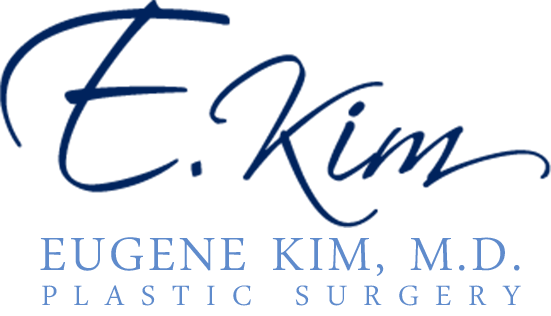 Are you considering breast augmentation revision surgery to reinvent your look? Whether you are unhappy with your current implants, experiencing complications, or simply looking for a change, this guide will provide you with the information you need to make an informed decision. Breast Augmentation Revision is a common procedure that can help you achieve the look you desire. Let’s explore the basics of this surgery and what to expect throughout the process. Board certified plastic surgeon Dr. Eugene Kim provides breast revision surgery to patients in Beverly Hills, Los Angeles, Santa Monica, West Hollywood, CA, and surrounding communities.
Are you considering breast augmentation revision surgery to reinvent your look? Whether you are unhappy with your current implants, experiencing complications, or simply looking for a change, this guide will provide you with the information you need to make an informed decision. Breast Augmentation Revision is a common procedure that can help you achieve the look you desire. Let’s explore the basics of this surgery and what to expect throughout the process. Board certified plastic surgeon Dr. Eugene Kim provides breast revision surgery to patients in Beverly Hills, Los Angeles, Santa Monica, West Hollywood, CA, and surrounding communities.
The Basics of Breast Augmentation Revision
Breast augmentation revision surgery is specifically designed to alter or replace existing breast implants for a range of reasons. These may include personal dissatisfaction with the appearance due to size or shape preferences, medical concerns like implant rupture or capsular contracture, or anatomical changes from aging, weight fluctuations, or pregnancy. This intricate procedure allows a plastic surgeon to carefully remove the old implants and introduce new ones, potentially adjusting their size, material, or placement to better align with the patient’s current desires or to address any health concerns. The process may also involve correcting any asymmetry, revising scar tissue, or performing additional breast shaping to achieve a more natural or desired aesthetic outcome. In essence, breast augmentation revision offers individuals the chance to refine or enhance their appearance when their initial augmentation no longer suits their expectations or needs. This tailor-made approach ensures that specific issues are addressed, bringing the patient closer to their aesthetic goals or resolving any discomfort and complications arising from their previous breast augmentation.
Deciding When It’s Time for Revision
Identifying the optimal moment for breast augmentation revision requires a blend of personal introspection and professional guidance. This pivotal decision is often influenced by a variety of factors ranging from physical discomfort to a desire for aesthetic enhancement. For some, the motivation comes from a longing to adjust their breast size or shape to better reflect their current lifestyle or self-image. In contrast, others might be propelled by medical necessities, such as the emergence of complications including implant rupture or capsular contracture, which necessitate a surgical response.
A significant change in your body, such as weight fluctuations, pregnancy, or natural aging, might alter the appearance of your breasts, pushing you toward considering revision. Additionally, the development of asymmetry, where one breast may look different from the other in size, shape, or position, can also be a compelling reason to seek a revision.
It’s crucial to maintain an open and honest dialogue with your plastic surgeon, discussing any physical or aesthetic concerns that have arisen since your initial procedure. They can offer invaluable insights into whether your observations and feelings align with the practical considerations of undergoing a revision surgery. Through a thorough evaluation, your surgeon can help you understand if a revision can address your concerns or if alternative solutions might be more appropriate.
Embarking on this journey requires careful consideration, not only of the reasons compelling you toward revision but also of the timing. Ensuring that your body has fully healed from the first augmentation and that your circumstances are conducive to undergoing another surgical procedure is essential for both your health and the success of the revision.
Exploring Your Implant Options
In the realm of breast augmentation revision, selecting the right implant is paramount to achieving your envisioned outcome. This choice hinges on various factors, including the desire for a different size, shape, or the need to switch from saline to silicone implants (or vice versa) for a more natural feel and appearance. Your surgeon will delve into the specifics of implant types available—saline, silicone, and the newer cohesive gel silicone implants, each offering unique benefits and characteristics. Saline implants, for instance, are known for their safety feature of being absorbed by the body in case of rupture, while silicone implants are praised for their ability to mimic the feel of natural breast tissue more closely.
Cohesive gel silicone implants, often referred to as “gummy bear” implants, hold their shape even when cut, offering a firmer feel and less likelihood of rippling. The decision also encompasses the choice between round and anatomical (teardrop-shaped) implants, which influence the breast’s contour and overall appearance post-surgery. Round implants tend to provide more fullness in the upper breast area, giving a more pronounced cleavage, while teardrop implants offer a more gradual slope, akin to a natural breast shape.
Texture is another consideration, with options ranging from smooth to textured surfaces, the latter of which can reduce the risk of implant movement and capsular contracture. Your surgeon’s expertise will guide this personalized selection process, taking into account your body frame, skin elasticity, and previous implant history to recommend the most suitable type and size of implant. This thorough exploration ensures the revised augmentation aligns with your aesthetic goals, lifestyle, and any corrective needs from your prior augmentation.
The Revision Surgery: What to Expect
Undergoing breast augmentation revision surgery entails a detailed procedure tailored to your unique needs and circumstances. Your surgeon will initiate the process by meticulously removing the existing implants. The method of removal and the approach for insertion of new implants may vary based on the underlying reason for the revision, such as addressing complications like capsular contracture or meeting a desire for a change in implant size or type.
Once the old implants are removed, the surgeon will proceed to insert the new implants. This could involve adjusting the pocket where the implant sits — either by making it smaller or larger, changing its location, or modifying the pocket’s shape to accommodate the new implant size or type better and to correct any asymmetry or shape concerns from the previous augmentation.
The entire surgery is typically carried out under general anesthesia, ensuring that you are comfortable and pain-free throughout the procedure. The duration of the operation can vary, largely depending on the complexity of the surgery required and whether additional procedures, such as scar tissue removal or breast lift, are being performed concurrently.
Post-surgery, you will be closely monitored until you are ready to be discharged. It’s crucial to have a clear understanding of the recovery process from your surgeon, including guidelines on activity restrictions, managing discomfort, and the care of your incisions to facilitate a smooth and effective healing process.
Recovery timelines can differ from one individual to another, influenced by the extent of the revision and the body’s natural healing response. While some may find they can resume normal activities within a few weeks, it’s important to adhere to your surgeon’s advice and give your body the time it needs to recover fully.
Risks and Complications of Revision Surgery
Embarking on breast augmentation revision surgery, like any surgical endeavor, carries its own set of inherent risks and potential complications that should be carefully considered. These include, but are not limited to, the possibility of infection, which can complicate the healing process and might require additional treatment. There’s also a risk of bleeding, a common concern with many surgical procedures that can lead to further complications if not managed properly. Changes in nipple sensation or loss of sensitivity can occur, affecting the sensory experience of the breasts. The risk of implant rupture remains a concern, necessitating prompt attention and likely another surgical intervention to replace the compromised implant. Furthermore, capsular contracture, a condition where the scar tissue that normally forms around the implant tightens and squeezes it, can cause pain and distort the appearance of the breast, possibly requiring surgery to remove the scar tissue and replace the implant.
It is essential for patients to have a comprehensive discussion with their plastic surgeon about these risks. Understanding the potential complications and weighing them against the benefits of the procedure is crucial. Adhering to post-operative care instructions provided by the surgeon is paramount in minimizing the likelihood of these risks and ensuring a smoother recovery process. This proactive engagement and careful consideration of potential risks are vital steps in the journey toward achieving the desired outcome from breast augmentation revision surgery.
Planning for Your Revision Surgery
When contemplating breast augmentation revision, laying the groundwork is key. Start by organizing comprehensive discussions with your chosen plastic surgeon to clarify your aesthetic and health objectives. These conversations will serve as a cornerstone for tailoring the procedure to your specific needs, ensuring alignment between your expectations and the achievable outcomes. Preparation extends beyond dialogue; it involves adhering to given medical advice, undergoing necessary health evaluations, and making logistical arrangements for your recovery period. It’s imperative to address any lingering questions or concerns during these preparatory stages, allowing for a seamless transition into surgery and beyond. This preparatory phase is not just about logistical readiness but also about fostering a mental and emotional foundation, ensuring you are fully informed and comfortable with the journey ahead.
Contact the Office of Beverly Hills Plastic Surgeon Dr. Eugene Kim
Click here see more plastic surgery procedures and treatments performed by Board Certified Plastic Surgeon, Dr. Eugene Kim on patients in Beverly Hills, Los Angeles, West Hollywood, Santa Monica, CA and surrounding areas or call 310-271-6996 to schedule a consultation.
